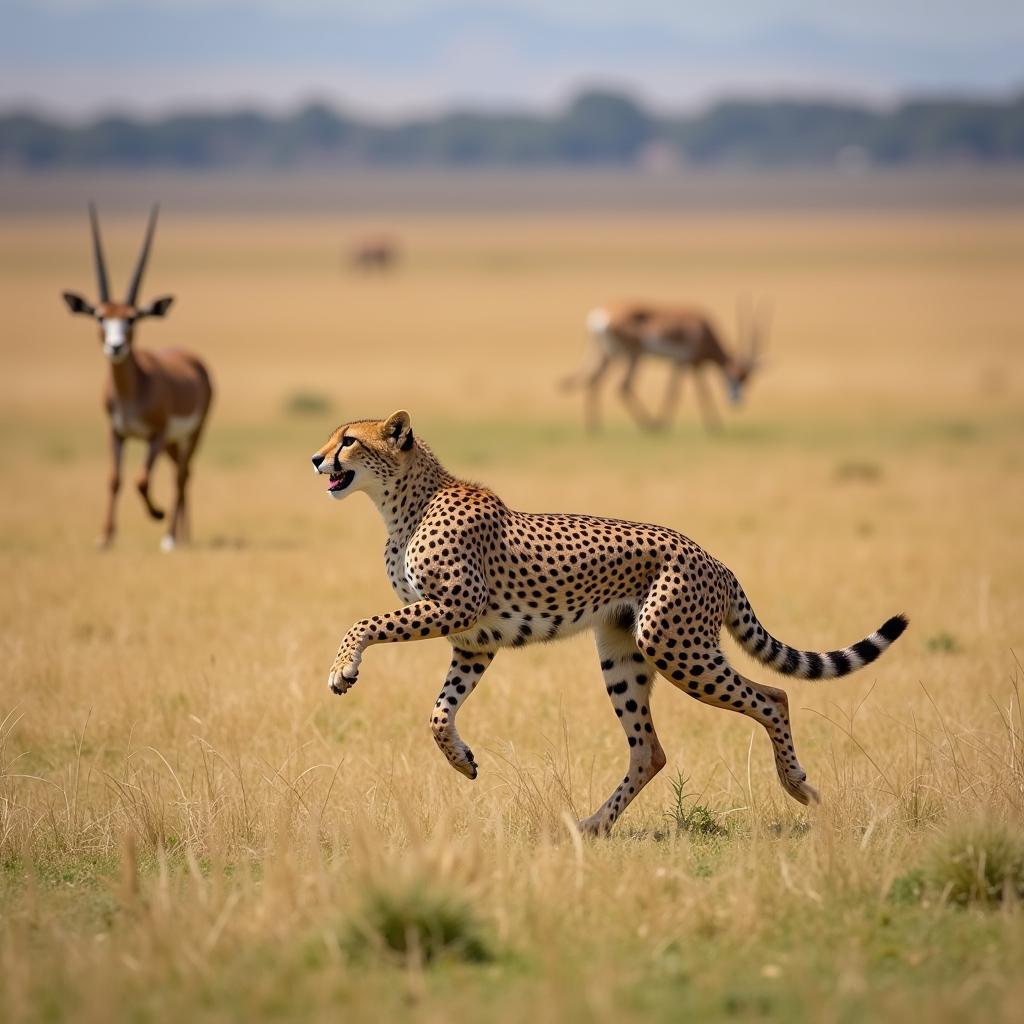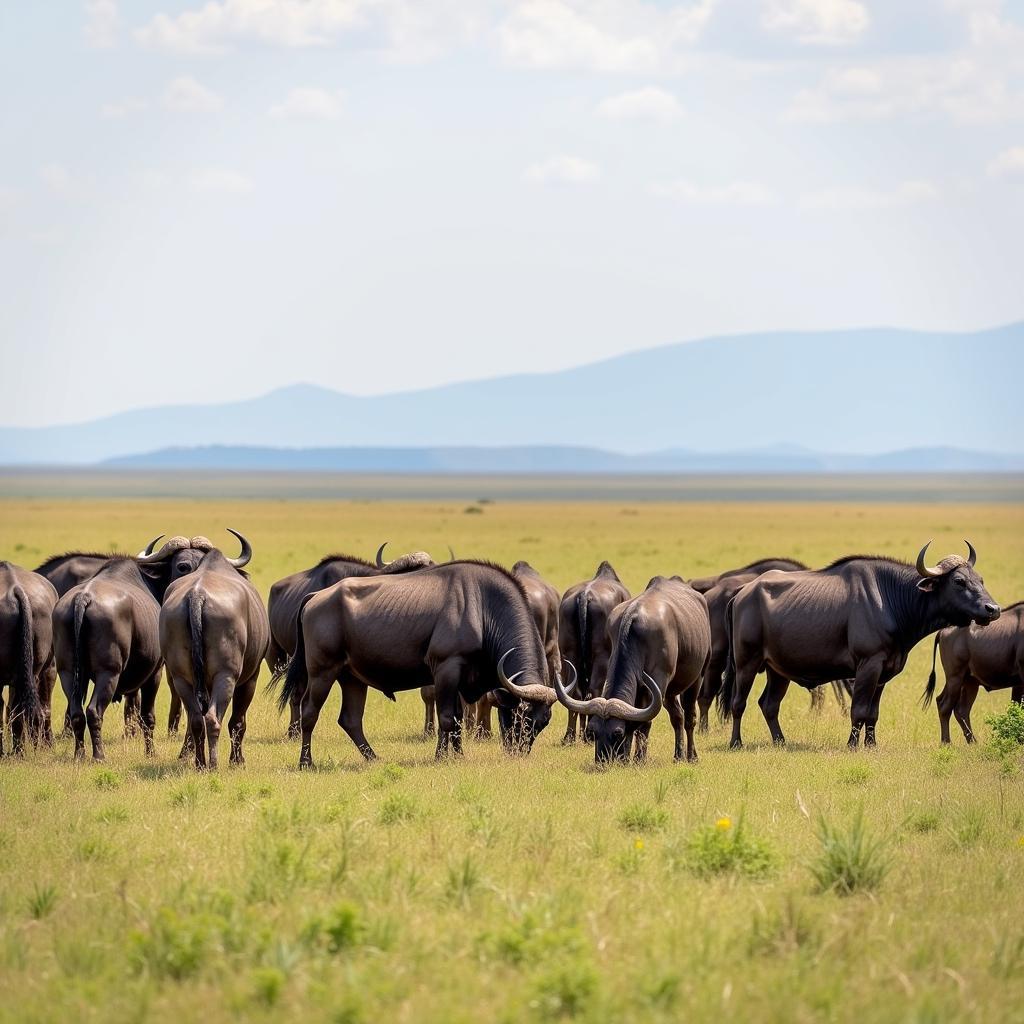Exploring the Wonders of African Safari Animals
Embark on an unforgettable journey into the heart of Africa and discover the mesmerizing world of African Safari Animals. From the iconic Big Five to the elusive smaller creatures, the African savanna teems with a breathtaking diversity of wildlife. This article will delve into the fascinating lives of these remarkable animals, exploring their habitats, behaviors, and the crucial role they play in maintaining the delicate balance of the African ecosystem. Let’s begin our adventure into the wild!
Seeing these majestic creatures in their natural habitat is a truly awe-inspiring experience. The African savanna, with its vast grasslands and scattered acacia trees, provides a dramatic backdrop for the daily lives of these incredible animals. From the powerful roars of lions to the gentle grazing of zebras, the sights and sounds of the African bush are unlike anything else on Earth. After learning about the Big Five, you can learn about more african group animals images.
The Majestic Big Five: Kings and Queens of the Savanna
The term “Big Five” originally referred to the five most difficult animals to hunt on foot in Africa. Today, it represents some of the most sought-after sightings on an African safari. These iconic animals include the lion, elephant, leopard, rhinoceros, and Cape buffalo. Each possesses unique characteristics and plays a vital role in the ecosystem.
Lions: The Apex Predators
Lions, with their regal manes and powerful roars, are the apex predators of the African savanna. They live in prides, complex social structures led by a dominant male. Witnessing a lion hunt is a thrilling experience, showcasing their incredible strength and teamwork. What do lions eat? Their diet primarily consists of large herbivores like zebras, wildebeest, and buffalo.
Elephants: Gentle Giants of the Savanna
Elephants, the largest land mammals on Earth, are known for their intelligence, social complexity, and gentle nature. These magnificent creatures roam the savanna in herds, led by a matriarch. Observing their interactions, from playful youngsters to wise elders, is a truly heartwarming experience. What is unique about elephants? Their remarkable trunks serve multiple purposes, from gathering food and water to communicating and displaying affection.
 African Elephant Family at Sunset on the Savanna
African Elephant Family at Sunset on the Savanna
Leopards: Masters of Camouflage
Leopards, with their striking spotted coats, are masters of camouflage. These elusive cats are solitary creatures, often seen perched in trees, where they stalk their prey. Their agility and stealth make them formidable hunters. What do leopards eat? Their diet includes a variety of animals, from small rodents to larger ungulates. Learn more about the african buffalo safari animals.
Beyond the Big Five: Discovering Africa’s Hidden Gems
While the Big Five are undoubtedly impressive, the African savanna is home to a plethora of other fascinating creatures. From the graceful giraffes browsing on acacia leaves to the colorful birds flitting through the trees, every corner of the ecosystem teems with life.
Cheetahs: The Fastest Land Animals
Cheetahs, with their sleek bodies and incredible speed, are the fastest land animals on Earth. Witnessing a cheetah chase is a breathtaking spectacle, as they accelerate to astonishing speeds in pursuit of their prey. What is the cheetah’s top speed? They can reach speeds of up to 70 miles per hour in short bursts.
 Cheetah in High-Speed Chase of a Gazelle on the African Savanna
Cheetah in High-Speed Chase of a Gazelle on the African Savanna
Rhinos: Ancient Armored Giants
Rhinos, with their thick hides and distinctive horns, are ancient armored giants. These powerful herbivores play a crucial role in shaping the savanna landscape. Sadly, they are also critically endangered due to poaching. What are the different types of rhinos? Africa is home to two species: the white rhinoceros and the black rhinoceros. You can find some great images related to African animals if you check out this african animals poster.
Dr. Anika Mosi, a renowned wildlife biologist specializing in African ecosystems, emphasizes the importance of conservation efforts: “Protecting these magnificent animals is not just about preserving biodiversity; it’s about safeguarding the future of our planet.”
Cape Buffalo: The Unpredictable Bovine
Cape buffalo, with their massive horns and formidable size, are known for their unpredictable nature. These powerful herbivores roam the savanna in large herds, often engaging in fierce battles with predators. What makes Cape buffalo dangerous? Their aggressive behavior and sharp horns make them a formidable opponent. If you want to learn about other fascinating African animals, take a look at the big 5 african animals.
 Cape Buffalo Herd Grazing on the African Savanna
Cape Buffalo Herd Grazing on the African Savanna
Conclusion: Preserving Africa’s Wildlife Heritage
Experiencing the wonders of African safari animals is a journey that will stay with you forever. From the majestic Big Five to the countless other fascinating creatures, the African savanna offers a glimpse into a world of unparalleled beauty and biodiversity. Let’s work together to protect these incredible animals and ensure their survival for generations to come. Learn some interesting african animals facts ks1.
FAQ
- What is the best time to go on an African safari?
- What should I pack for an African safari?
- What are the different types of safaris available?
- Are there any safety precautions I should take on safari?
- What is the cost of an African safari?
- What are some ethical considerations for safari tourism?
- How can I contribute to conservation efforts in Africa?
Need more information about African Safari Animals? Contact us at: +255768904061, [email protected] or visit us at Mbarali DC Mawindi, Kangaga, Tanzania. Our customer service team is available 24/7.

